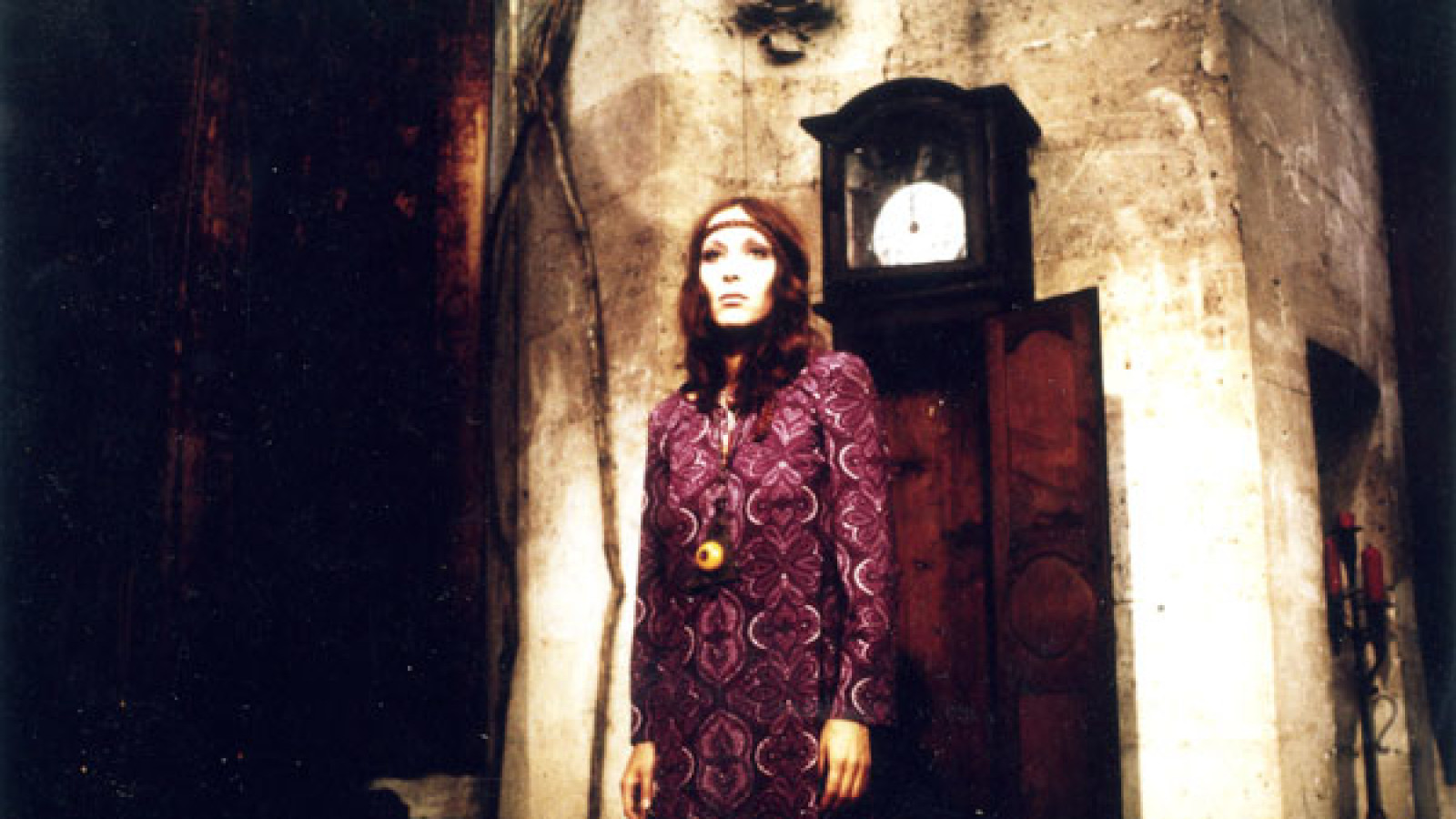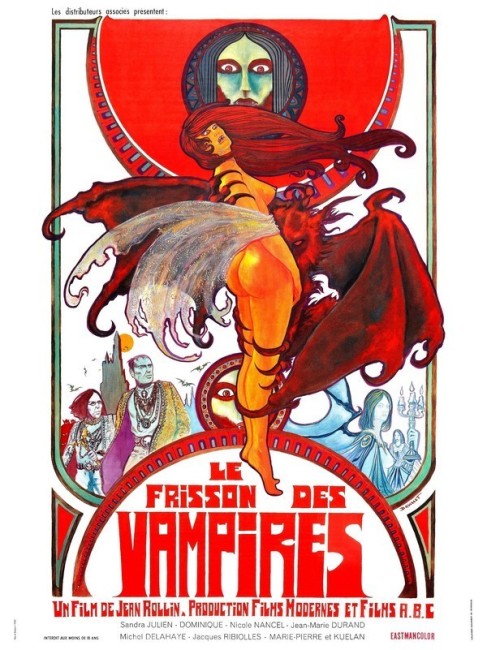aka Sex and the Vampire; The Terror of the Vampires; Shiver of the Vampire; Thrill of the Vampire
France. 1971.
Crew
Director/Producer – Jean Rollin, Screenplay – Jean Rollin & Monique Natan, Photography – Jean-Jacques Renon, Music – Groupe Ecanthus, Art Direction – Michel Delasalles. Production Company – Filmes Modernes/Les Films ABC.
Cast
Dominique (Isolde), Sandra Julien (Isa), Jean-Marie Durand (Anthony), Nicole Nancel (Isabelle)
Plot
A honeymooning couple, Anthony and Isa, stop off to visit the castle of her cousins, only to be informed by the two loyal women servants that the cousins are dead. Isa does not want to consummate their marriage and pushes Anthony away from her. Isa is then seduced by the vampire Isolde. Next, the two cousins rise from the tomb, proving to be vampires too, but opposed to Isolde. As Isa goes over to the vampire side, Anthony tries to stop the vampire menace.
French director Jean Rollin began making arty vampire films on next-to-no budgets, beginning with The Rape of the Vampire (1968) and La Vampire Nue (1970) and the subsequent Requiem for a Vampire (1972). Rollin languished in relative obscurity, bar some badly cut US releases, until his name was praised by genre critic David Pirie and his films subsequently championed by the Psychotronic press in their ever-increasing search of more exotic cinema. Since the 1970s, Jean Rollin’s work has moved toward the increasingly more commercial and at the same time far less satisfying genre material, as well as various works of non-genre erotica. (See below for a full list of Jean Rollin’s genre films).
The case for Jean Rollin may well have been overstated. Le Frisson des Vampires, one of the lynchpins in the Rollin oeuvre, is a film that seems caught between an adolescent prurience on one hand and the arty pretensions of a first year film school student on the other. It has its occasional moments of surreal glory – a vampire that sleeps inside a grandfather clock and only rises at midnight (and the accompanying image of a female victim draped willingly around the clock waiting for her to awaken); the pre-Madonna-esque image of a vampire wearing giant spiked black nipple caps; skulls in a goldfish bowl and the like.
On the other hand, these, which are always the points that Jean Rollin’s admirers light upon, are interspersed with long moments of almost near plotless incoherence. Rollin’s surrealist images – coffins in the middle of a ruined abbey, naked women emerging out of grandfather clocks and giant ornate chimney places – seem inserted less with logical purpose in mind and more for the visual image each provides. The rest of the time the plot seems assembled in order to display as many women in a state of undress as possible.

What plot there is is occasionally reminiscent of Harry Kumel’s Daughters of Darkness (1971), which came out around the same time and also a featured a newlywed couple being seduced by vampires in an ornate old building. Indeed, some of the glimpses of the background here – that of internecine warfare between the vampire camps over who is closest to the true bloodline – offer a story that is often potentially more intriguing than the one Kumel’s film has.
There are elements of the film – the swinging electric rock score, the zombified hippie chick disciples that go gaily dancing off together at the end – that make Le Frisson des Vampires seem to be born more of drug-induced 1960s fantasia than of anything to do with the vampire film, something a number of other 1970s horror films – I Drink Your Blood (1970), The Velvet Vampire (1971) and Deathmaster (1972) – also exploited. Certainly, in the burgeoning field of vampire erotica – a early 1970s trend that Le Frisson des Vampires was one of the first to explore – it is a film that displays its sexuality with far more confidence and openness than the giggly adolescence of Hammer’s The Vampire Lovers (1970).
Jean Rollin’s other genre films are:- The Rape of the Vampire (1968), The Naked Vampire (1970), Virgins and Vampires/Caged Virgins (1971), The Iron Rose (1973), Demoniacs/Curse of the Living Dead (1974), Lips of Blood (1975), Pesticide/The Grapes of Death (1978), Fascination (1979), The Night of the Hunted (1980), Zombies’ Lake (1981), The Living Dead Girl (1982), Two Orphan Vampires (1997), The Fiancee of Dracula (2002), Night of the Clocks (2007) and The Mask of Medusa (2010).
Trailer here


